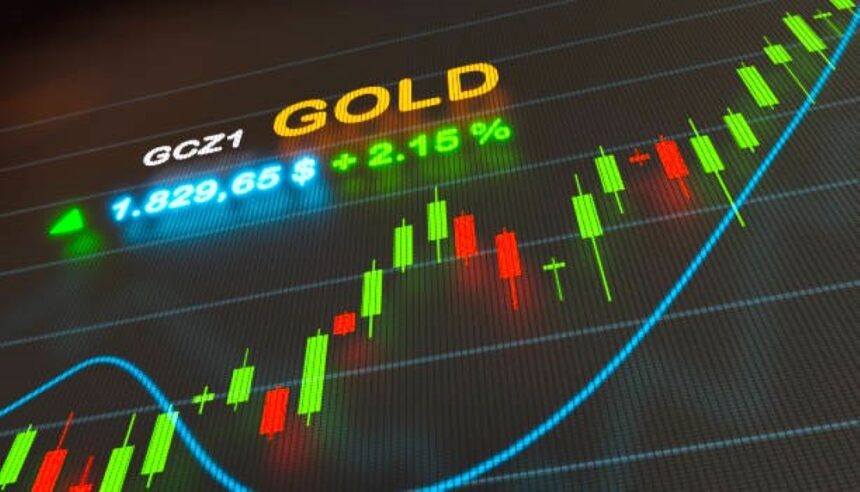Gold has stalled its recovery from its lowest level in almost a month.
The gold price (XAUUSD) rose on the first day of the new week, reversing a portion of Friday’s post-NFP collapse to the $2,287-2,286 range, or more than a one-month low. The increase, however, is limited by a strong US Dollar (USD), which tends to dampen demand for USD-denominated commodities. Stronger than predicted.
Reduced bets on a September Fed rate drop support the US dollar and restrict the gold price.
The US monthly jobs report released on Friday prompted investors to reduce their expectations for an immediate interest rate cut by the Federal Reserve (Fed) in September. This keeps US Treasury bond yields up, allowing the USD to remain near a multi-week high reached on Monday.
Furthermore, the People’s Bank of China (PBoC) recorded no changes in its gold holdings in May, bringing a stop to a one-and-a-half-year buying frenzy. This helps to keep the gold price stable, however political uncertainties in Europe should limit the downside. Traders may also opt to stay on the sidelines ahead of this week’s release of the latest US consumer inflation numbers and the FOMC’s highly anticipated monetary policy decision on Wednesday. Investors will search for clues about when the Fed is likely to start cutting rates, determining the non-yielding yellow metal’s near-term future.
Daily Market Movers: Gold pricing struggles to attract buyers despite aggressive Fed predictions and bullish USD.
The strong US Nonfarm Payrolls report issued on Friday fanned speculation that the Federal Reserve will maintain interest rates higher for longer, which might act as a negative for the non-yielding gold price.
Following the US jobs report, the probability of a September rate cut fell to approximately 50%, and markets now expect only one 25-basis-point cut this year, perhaps at the November or December policy meeting.
The 10-year US government bond yield continues above 4.45%, while the rate-sensitive two-year US Treasury note yield remains close to 5.0%, supporting the US dollar.
The USD Index, which tracks the US dollar against a basket of currencies, is trading near its highest level since May 14 on Monday, limiting the upside for the USD-denominated commodity.
French President Emmanuel Macron’s decision to schedule snap elections later this month has heightened political uncertainty in the Eurozone’s second-largest economy, which could help the XAUUSD.
Traders were hesitant ahead of the US CPI and FOMC decisions on Wednesday.
Traders also appear hesitant to place aggressive directional bets before this week’s major US macro data – the most recent consumer inflation figures – and the critical FOMC meeting on Wednesday.









